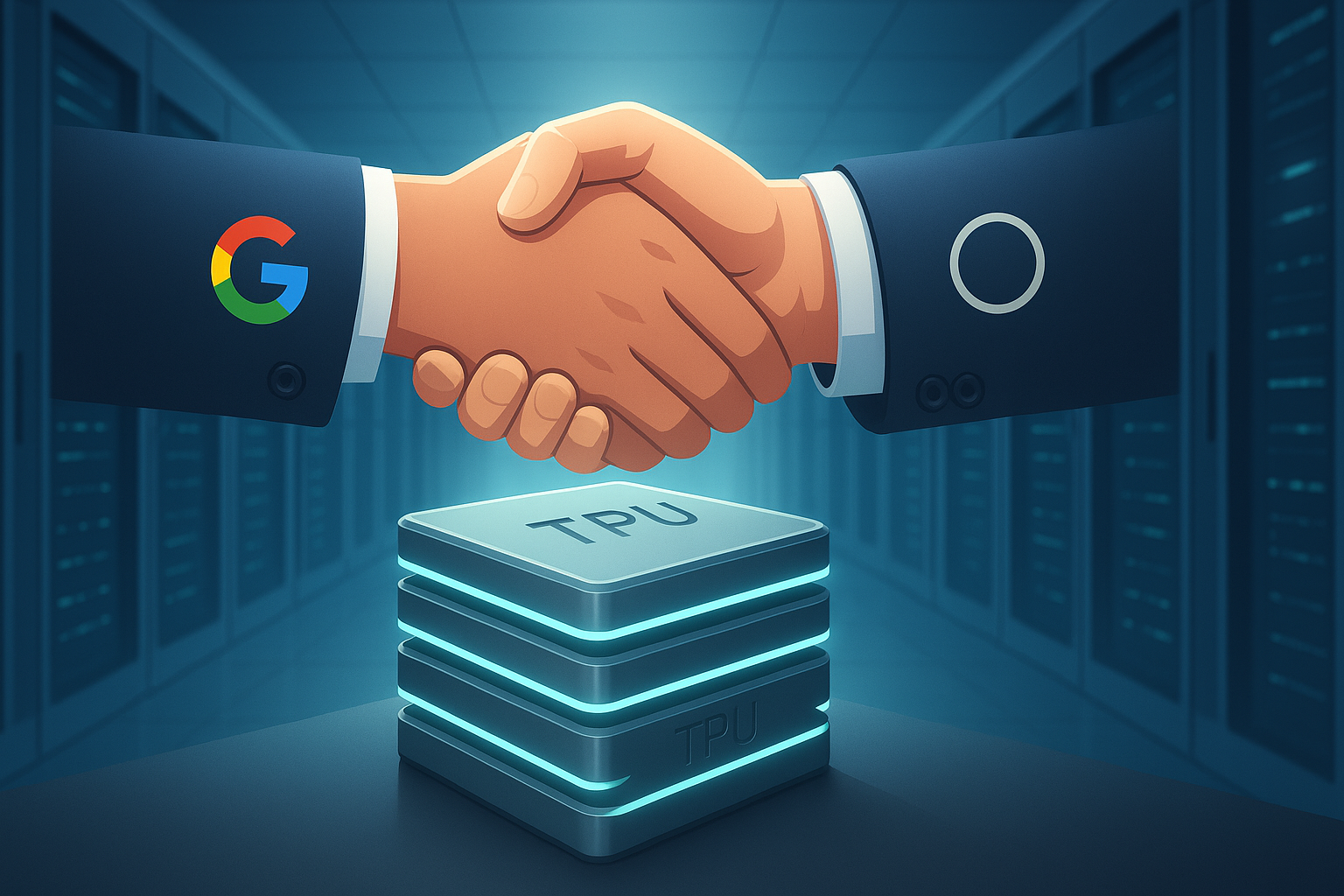Look, I've seen plenty of eye-popping deals in tech over the years, but this one? This one's different.
Google and Anthropic just announced what might be the most significant cloud partnership in AI history—a deal worth "tens of billions" that will give Claude's maker access to one million TPUs. That's not a typo. One. Million. Specialized AI chips.
The scale here is almost impossible to wrap your head around. We're talking about more than a gigawatt of computing power. That's nuclear reactor territory, folks.
Having covered tech partnerships since the early cloud wars, I can tell you this isn't just another corporate handshake. It's Google's largest TPU commitment ever, and it signals a fundamental shift in how the AI race is being funded and fought.
When Desperation Meets Deep Pockets
There's an interesting dynamic at play here that explains why these mega-deals keep happening. The cloud giants (Google, Microsoft, Amazon) have the infrastructure—the data centers, the chips, the cooling systems—while AI companies have the algorithms and talent.
Neither can thrive without the other.
Google desperately needs to prove its TPUs matter in a world where Nvidia GPUs have become the gold standard. Anthropic, meanwhile, needs unfathomable amounts of computing power to keep pace with OpenAI. When you've got models that cost hundreds of millions to train, you can't exactly run them on your MacBook Pro.
"This partnership gives us the computational foundation to build more capable, more aligned AI systems," an Anthropic spokesperson told me yesterday. (Translation: Without Google's chips, we'd be toast in this race.)
But here's what's fascinating—Anthropic isn't putting all its eggs in Google's basket. They're maintaining what they call a "multi-cloud strategy," which... c'mon, that's corporate-speak for "we're hedging our bets." They've previously inked deals with Amazon and others, creating a delicate balance of dependencies that would make a Cold War diplomat proud.
Silicon Valley's New Silicon Wars
Remember when we used to get excited about a new iPhone chip? Those days seem quaint now.
The battle for AI dominance has become, quite literally, a battle over silicon. Google's TPUs—tensor processing units—are custom-designed for the specific mathematical operations that power large language models. While Nvidia has been printing money with its GPUs (seriously, have you checked their market cap lately?), Google believes its specialized approach offers advantages for certain AI workloads.
I toured one of Google's data centers last year, and the investment in custom silicon was evident everywhere. These aren't just servers in racks; they're specialized computing environments designed from the ground up for AI.
What makes this deal particularly interesting is that Google's parent Alphabet is also an investor in Anthropic. So they're both a supplier and a backer.
It's like saying, "Here's $500 million to build your company... and, by the way, would you mind spending a chunk of that with us?" Clever, right?
The Elephant (or Rather, Nuclear Reactor) in the Room
Can we talk about the energy implications for a second?
One gigawatt. By 2026.
That's... well, that's a lot. For perspective, a typical nuclear reactor produces between 800 megawatts and 1.1 gigawatts of power. So we're essentially saying that training AI models will soon consume as much electricity as a small city.
I've been tracking tech's energy footprint since the early bitcoin mining controversies, and this feels like a watershed moment. The environmental implications are impossible to ignore, regardless of how many carbon offsets these companies purchase.
Google has invested heavily in renewable energy—to their credit—but there's something unsettling about the sheer scale of resources being devoted to training these models. At what point does it become unsustainable?
I wouldn't be surprised if we eventually see AI companies directly investing in power generation. Anthropic building its own small modular nuclear reactor? It sounds absurd until you do the math on their computing needs.
Reading the Tea Leaves
What does all this mean for the future of AI and cloud computing?
First, it tells us that both Google and Anthropic are playing the long game. You don't commit tens of billions to something you think might be a passing fad.
Second, it highlights how the economics of AI are reshaping the tech landscape. The companies that control the infrastructure (chips, data centers, energy) have unprecedented leverage in this new world.
And third—this is crucial—it shows that despite all the hype around democratization, AI development is becoming more concentrated, not less. The capital requirements are simply too enormous for all but the best-funded players.
I had coffee with a venture capitalist last week who put it bluntly: "We're watching the formation of an AI oligopoly in real time." Hard to argue with that assessment when you see deals of this magnitude.
For investors trying to navigate this landscape, the signal is clear: Look at who controls the physical infrastructure underpinning AI. The algorithms get all the attention, but the silicon, electricity, and cooling systems are the true kingmakers.
In the end, Claude needs TPUs, Google needs validation for its AI strategy, and both need to convince the market they're not falling behind OpenAI and Microsoft. Ten billion dollars later, they've found a way to help each other out.
The future of AI, it turns out, isn't just about clever algorithms. It's about who controls the resources to make those algorithms run.
And in that game, Google just made a very big move.
